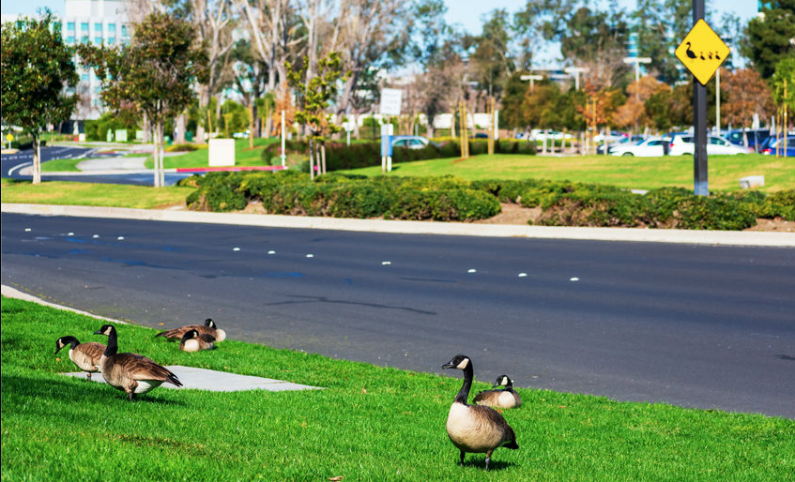
One of the most positive things to come out of the current situation is the abundance of nature and the return of wildlife to the most unlikely of places. Whilst unused, golf courses became havens for previously unwitnessed animal family gatherings. We have seen incredible reports of all kinds of animals roaming our usually chaotic, busy streets while we have all been safely indoors.
![[Mountain goats BBC.com]](assets/Uploads/_resampled/ResizedImage352164-Screenshot-2020-06-09-at-10.18.57.png) So even the most urban of landscapes have seen a dramatic shift in its population from us littering, fuel guzzling, polluting humans to the distinctly more acceptable behaviour of the animal kingdom. So how can lighting build on this and ensure that we don't scare the birds out of the trees with garish, unsympathetic lighting designs - particularly at night time.
So even the most urban of landscapes have seen a dramatic shift in its population from us littering, fuel guzzling, polluting humans to the distinctly more acceptable behaviour of the animal kingdom. So how can lighting build on this and ensure that we don't scare the birds out of the trees with garish, unsympathetic lighting designs - particularly at night time.
Big cities and towns illuminate the night sky so much Earth resembles a big, glowing ball. Scientists have spent years studying how light brightness and direction affects wildlife. [inews, 18 June 2018]
Outdoor lighting has a huge number of benefits - safety, visibility, focus - but it can also have some negatives. Bright lights can be out of kilter with their surroundings, they can disturb the natural balance of our leisure time if they are too obtrusive and also the colour of the light can set our teeth on edge if they aren't carefully considered.
As we've touched on in previous articles, outdoor lighting is essential for presenting your business well after-hours, offering a level of security and continuing to promote your brand or presence in a busy space competing for attention. After dark though maybe it's time to dial it down? As well as restaurants and shops, local councils have a duty to make sure our roads and pavements are well-lit and designs at this level should all work harmoniously with businesses so that they continue to achieve all of the benefits whilst also being respectful of the environment - both for people and nature.
Bright LED lights with white and bluish hughes are capable of affecting local wildlife “as much as the midday sun,” scientists have warned, and are leaving some species especially vulnerable. [inews, 18 June 2018]
At LAUK we use our expertise to provide outdoor lighting that is completely fit for purpose. We tick the practical boxes and then overlay that with design skills so it is aesthetically spot on. Taking further things into account might involve including different colour options for the bulbs implemented. A cool light is quite utilitarian but effective. A warm light is more welcoming and softer. It is possible to mix colours according to the time of day, our client's spec and taking safety into account. This creates a lighting design scheme that is mindful of its practical requirements whilst also being environmentally aware and respectful.
[Image courtesy of bbc.com - mountain goats roaming through Llandudno, north Wales]
